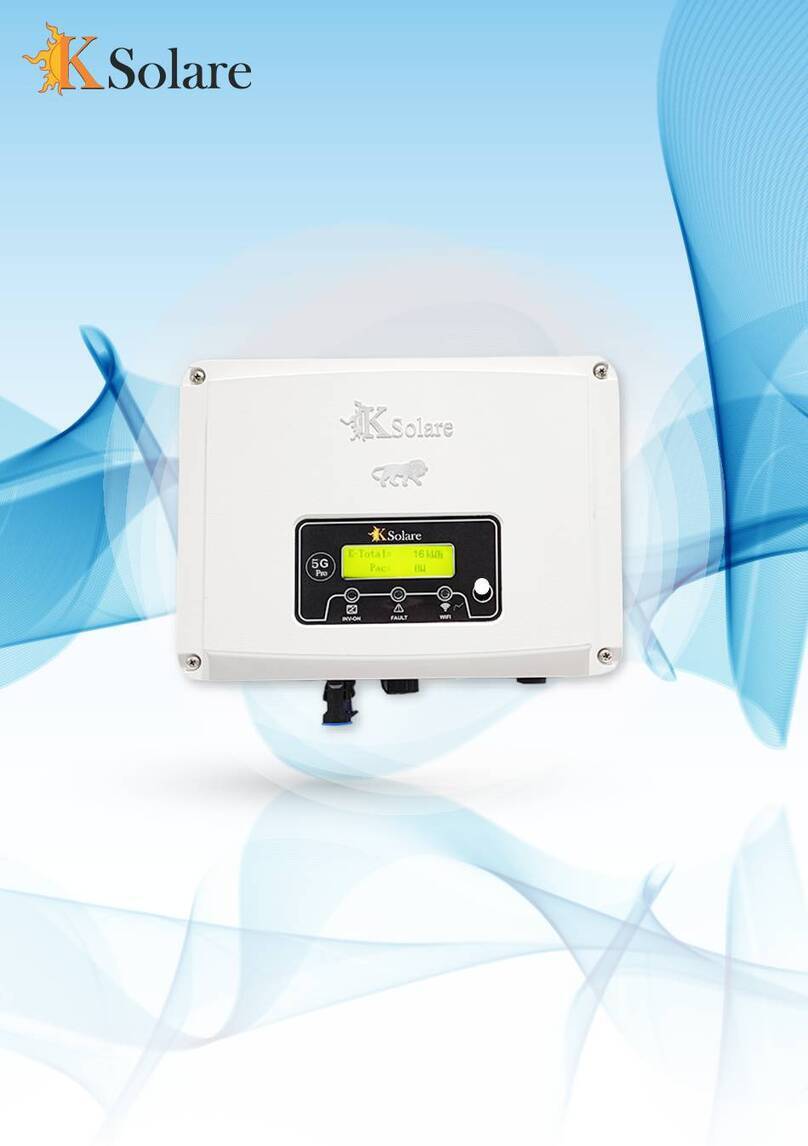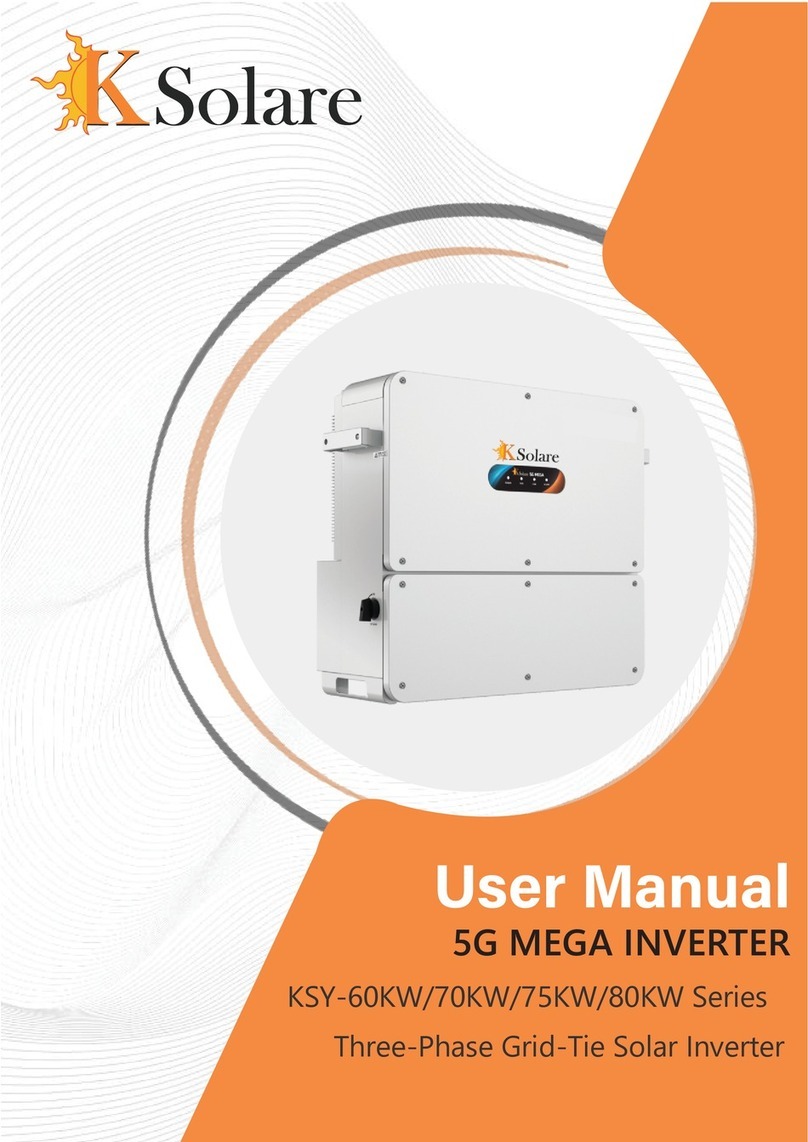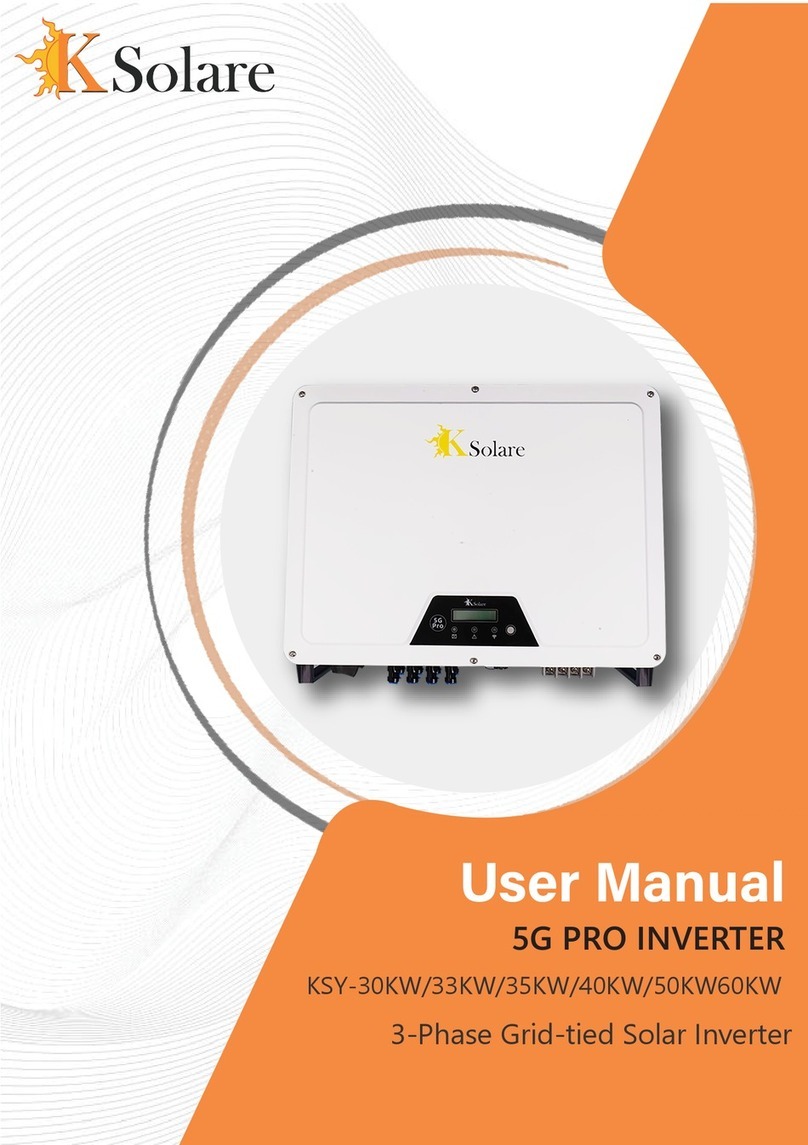
8
Danger to life due to high voltages of the PV array
When exposed to sunlight, the PV array generates dangerous DC voltage
which is present in the DC conductors and the live components of the
inverter. Touching the DC conductors or the live components can lead to
lethal electric shocks. If you disconnect the DC connectors from the inverter
under load, an electric arc may occur leading to electric shock and burns.
• Do not touch non-insulated cable ends.
• Do not touch the DC conductors.
• Do not touch any live components of the inverter.
• Have the inverter mounted, installed, commissioned and maintained only
by qualied persons with the appropriate skills.
• Prior to performing any work on the inverter, disconnect it from all voltage
sources as described in this document then wait 5 minutes at least.
Risk of injury due to electric shock and re caused by high leakage current
• The inverter must be reliably grounded in order to protect property and
personal safety.
Risk of injury due to hot heat sink
• The heat sink may get hot during operon. Do not touch!
































